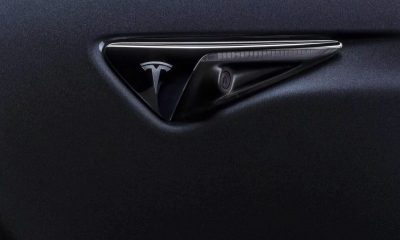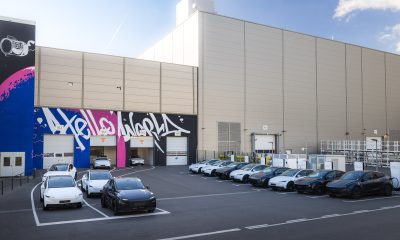
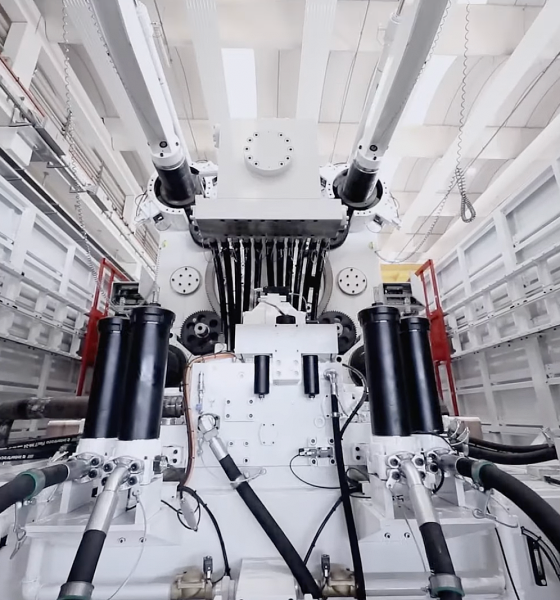
News
Tesla’s aluminum alloys patent hints at ultra-tough EVs that are cheaper to produce
It is widely known that Tesla constantly innovates, from the software of its cars to the chemistry of the batteries that power them. And if a newly published patent application is any indication, it appears that Tesla’s innovations actually go all the way down to the metals used to build its cars. By using aluminum alloys that were developed by the company, for example, Tesla may be able to usher in a new breed of electric cars that are incredibly tough while being cheaper to produce.
The patent, titled “Die Cast Aluminum Alloys for Structural Components,” describes an aluminum alloy that is both extremely tough and ductile. The aluminum alloy would not require further processing as well, allowing the company to improve its production costs.
In the patent’s description, Tesla noted that commercial cast aluminum alloys such as those used for electric vehicle chassis need to be both strong and ductile. Aluminum alloy components are typically formed by casting. If produced well, casted parts could be produced quickly and reliably, and they should maintain their structural properties well. Alloys that cannot be casted well, however, result in hot tearing, which causes issues.
Tesla emphasized that numerous structural components made of aluminum alloys today may require processes like heat treating, which improves strength, hardness, ductility, and corrosion resistance. These processes ensure quality, but they also require large capital expenditures, extended processing times, and potential yield losses. With this in mind, Tesla noted that it would be preferable to produce aluminum alloys with high yield strengths and sufficient ductility, while requiring no heat treatment.
Tesla describes some of its ideas in the following section.
“In one embodiment, the alloy comprises a yield strength of at least about 130 MPa and a bend angle of at least about 20° at a 3 mm section thickness when as-cast and without further processing. In one embodiment, the aluminum alloys comprise vanadium to provide many of these enhancements. In another embodiment, the aluminum alloy has a specific weight ratio of copper to magnesium to provide many of these enhancements of an alloy with the desired features. In one embodiment, the aluminum alloy has a weight ratio of Cu:Mg of about 4:1 to about 1: 1. In one embodiment, the aluminum alloy has a weight ratio of Cu:Mg of about 4: 1 to about 2: 1.
“As mentioned below, aluminum alloys with these compositions were found to have high yield strength and high ductility compared to available aluminum alloys. As mentioned below, the aluminum alloys are described herein by the weight percent (wt %) of the total elements and particles within the alloy, as well as specific properties of the alloys, it will be understood that the remaining composition of any alloy described herein is aluminum and incidental impurities.”
If Tesla could effectively introduce novel aluminum alloys for its vehicles, the company would likely be able to improve its production costs and its products’ overall quality. Stronger aluminum alloy parts may pave the way for vehicles that are safer than ever before, while the lack of heat treatment could ensure that Tesla’s operating costs are optimized further. The aluminum alloy parts may also contribute to higher production outputs, especially if they are fully compatible with the company’s megacast strategies.
Read Tesla’s full patent below.
Tesla Die Cast Aluminum Alloy Patent by Simon Alvarez on Scribd
Don’t hesitate to contact us with news tips. Just send a message to tips@teslarati.com to give us a heads up.
News
Tesla Sentry Mode helps lock up drive-by shooting suspect in Seattle
“A nearby Tesla actually captured the video that showed a man crouched behind a vehicle firing gunshots. A lot of vehicles record, and officers know that Teslas, especially, record, so we use that video all the time in these instances.”

Police in Seattle, Washington, are crediting Tesla’s well-known Sentry Mode for helping find a suspect in a drive-by shooting case.
A 21-year-old was arrested for an alleged drive-by shooting in the Pioneer Square neighborhood of Seattle this past Sunday, and the leads on the case seemed to be slim.
However, a Tesla parked nearby was able to record the shooting, as well as the car that the suspect hopped in after the crime occurred. It helped police identify the person they were looking for.
Seattle Police Department Detective Brian Pritchard said to MyNorthwest that the Tesla was a critical part of finding the suspect and placing him under arrest:
“A nearby Tesla actually captured the video that showed a man crouched behind a vehicle firing gunshots. A lot of vehicles record, and officers know that Teslas, especially, record, so we use that video all the time in these instances.”
The Tesla footage helped the Police put the suspect into handcuffs about an hour after the crime was committed. They are currently charged with drive-by shooting and unlawful possession of a firearm.
Tesla Sentry Mode is a security feature the vehicle utilizes to help solve crimes like vandalism, but it is also a cool feature that has caught things like accidents and other incidents on camera.
Many people still do not know about it, including the many vandals who keyed or broke the windows of Teslas earlier this year, as people damaged others’ cars in an act of retaliation against CEO Elon Musk when he became involved in politics.
This is far from the first time Sentry Mode has helped Police Departments solve crimes. Last September, we reported on Oakland’s Police Department in California using Teslas near crime scenes to help solve cases.
Tesla Sentry Mode is Oakland PD’s secret weapon against rising crime
Sergeant Ben Therriault, president of the Richmond Police Officers Association, said, “We have all these mobile video devices floating around,” in reference to the Teslas that sit and capture nearly everything that surrounds them.
Sentry Mode has helped officers arrest a variety of suspects, including several people who were allegedly involved in the murder of a 27-year-old woman in Northern California.
Elon Musk
UPDATE: Tesla investors push Charles Schwab for Musk comp plan clarification

Update: 4:00 p.m. EDT – Charles Schwab has reached out to TESLARATI with the following statement, clarifying that it plans to vote FOR Musk’s compensation package:
“Schwab Asset Management’s approach to voting on proxy matters is thorough and deliberate. We utilize a structured process that focuses on protecting and promoting shareholder value. We apply our own internal guidelines and do not rely on recommendations from Glass Lewis or ISS. In accordance with this process, Schwab Asset Management intends to vote in favor of the 2025 CEO performance award proposal. We firmly believe that supporting this proposal aligns both management and shareholder interests, ensuring the best outcome for all parties involved.”
There have also been updates to the headline and various paragraphs to reflect this as well as accuracy.
Tesla investors are pushing Charles Schwab for clarification after it was expected to vote against CEO Elon Musk’s pay package.
Several high-profile Tesla influencers are speaking out against Charles Schwab, saying its decision to vote against the plan that would retain Musk as CEO and give him potentially more voting power if he can achieve the tranches set by the company’s Board of Directors.
The Tesla community appeared to see that Schwab is one firm that tends to vote against Musk’s compensation plans, as they also voted against the CEO’s 2018 pay package, which was passed by shareholders but then denied by a Delaware Chancery Court.
Schwab’s move was recognized by investors within the Tesla community and now they are speaking out about it:
Hey @CharlesSchwab – I need to speak with someone from Schwab Private Wealth Services this week. Please reach out via email, the mobile app message center, phone, or X DM.
Here’s why this is urgent: At least 6 of your ETF funds (around 7 million $TSLA shares) voted against… https://t.co/uSgPWnfTFc
— Jason DeBolt ⚡️ (@jasondebolt) November 3, 2025
If @CharlesSchwab doesn’t vote for Elon Musk’s 2025 CEO Performance Award plan, I’ll move all my assets to another brokerage. My followers, many of whom also hold assets with Schwab and collectively own at least hundreds of millions in $TSLA, may do the same.
I can’t in good… https://t.co/6iUU6PdzYx
— Sawyer Merritt (@SawyerMerritt) November 3, 2025
ready to help with the @CharlesSchwab exodus
— Gali (@Gfilche) November 3, 2025
At least six of Charles Schwab’s ETFs were expected to vote against Tesla’s Board recommendation to support the compensation plan for Musk. The six ETFs represent around 7 million Tesla $TSLA shares.
Jason DeBolt, an all-in Tesla shareholder, summarized the firm’s decision really well:
“As a custodian of ETF shares, your fiduciary duty is to vote in shareholders’ best interests. For a board that has delivered extraordinary returns, voting against their recommendations doesn’t align with retail investors, Tesla employees, or the leadership we invested to support. If Schwab’s proxy voting policies don’t reflect shareholder interests, my followers and I will move our collective tens of millions in $TSLA shares (or possibly hundreds of millions) to a broker that does, via account transfer as soon as this week.”
Tesla shareholders will vote on Musk’s pay package on Thursday at the Annual Shareholders Meeting in Austin, Texas.
It seems more likely than not that it will pass, but investors have made it clear they want a decisive victory, as it could clear the path for any issues with shareholder lawsuits in the future, as it did with Musk’s past pay package.
News
Tesla Cybertruck explosion probe ends with federal involvement and new questions
The 78-page document detailed a planned attack by former Green Beret Matthew Livelsberger, who died by suicide before the blast that injured six people.
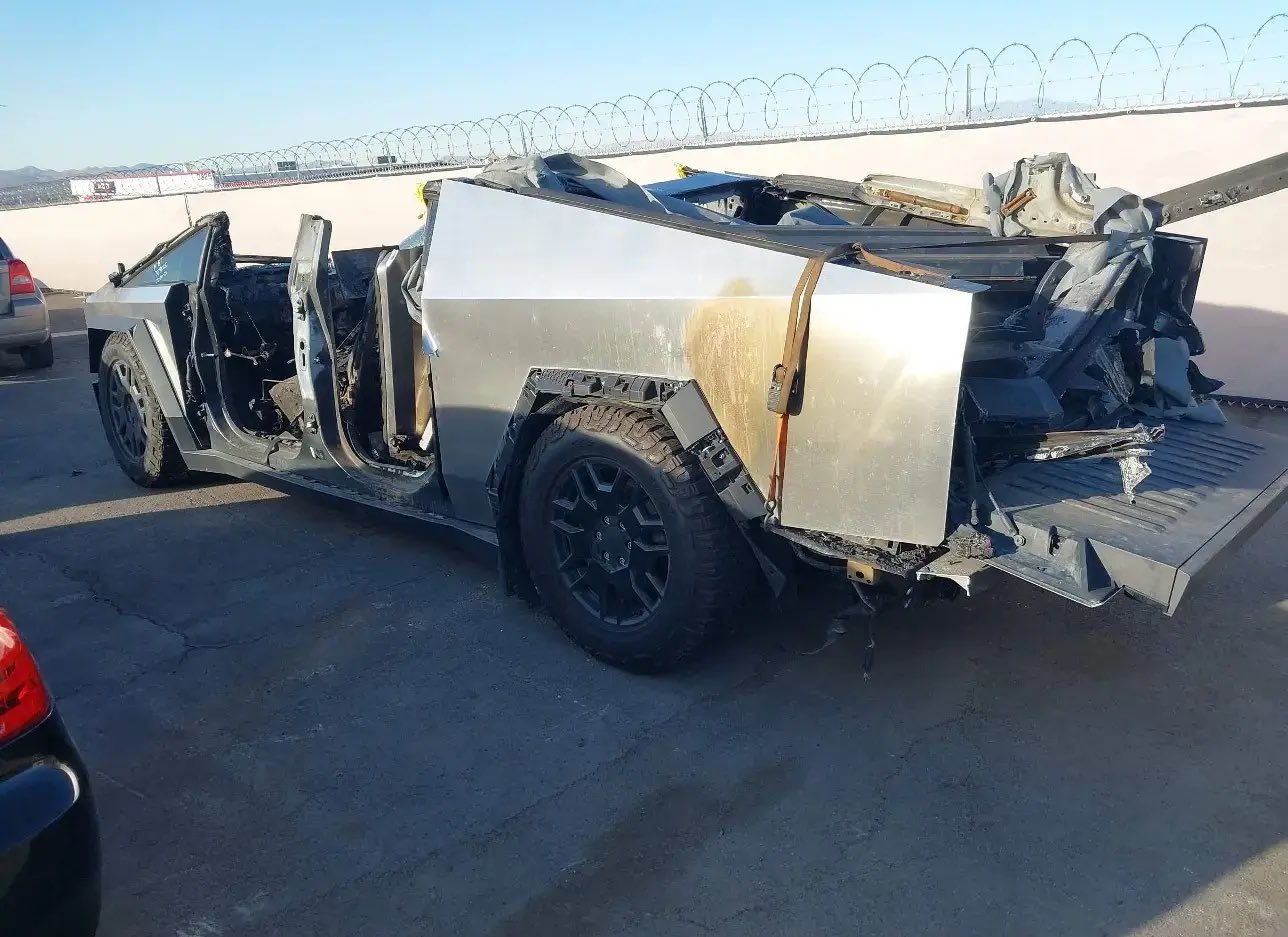
The Las Vegas Metropolitan Police Department (LVMPD) has released its final investigative report into the New Year’s Day Cybertruck explosion outside the Trump International Hotel. But instead of bringing clarity, the findings have only raised more questions.
The 78-page document detailed a planned attack by former Green Beret Matthew Livelsberger, who died by suicide before the blast that injured six people.
The perpetrator’s manifesto
According to a Fox News report, Livelsberger rented the all-electric pickup through Turo while on leave from his Special Forces unit. He filled the rented Cybertruck with fireworks, gas cans, and camping fuel before driving it to the hotel shortly after 8:40 a.m. on January 1. Surveillance footage showed him pouring accelerant into the truck bed moments before detonation, confirming premeditation.
Livelsberger left a manifesto on his phone, which was later deemed classified by the Department of War. This case was then handed over to federal authorities. Still, the LVMPD and federal investigators noted in their report that the incident was a “vehicle-borne improvised explosive device” (VBIED) attack “with the potential to cause mass casualties and extensive structural damage.” Officials, however, stopped short of labeling it terrorism.
In digital notes, Livelsberger wrote that his act was not terror-related but intended as “a wake-up call,” criticizing what he called America’s “feckless leadership.” He wrote, “Americans only pay attention to spectacles and violence. What better way to get my point across than a stunt with fireworks and explosives.”
The incident ironically showcased the Cybertruck’s durability
Tesla CEO Elon Musk was among the first to respond publicly after the blast, confirming through X that the company’s senior team was investigating the incident. He later stated that vehicle telemetry showed no malfunction and that the explosion was caused by “very large fireworks and/or a bomb” placed in the Cybertruck’s bed.
Ironically, footage of the incident in the Cybertruck’s bed showed that the vehicle’s durable construction actually helped contain the explosion by directing the blast upwards. The bed remained largely intact after the explosion as well. Even more surprisingly, the Cybertruck’s battery did not catch fire despite the blast.
Months later, the same Cybertruck appeared on the online auction platform IAA, marked as “not ready for sale.” The listing has stirred debate among Tesla fans about why the historic vehicle wasn’t reclaimed by the company. The vehicle, after all, could serve as a symbol of the Cybertruck’s resilience, even in extreme circumstances.
-

 News2 weeks ago
News2 weeks agoTesla rolled out a new feature with FSD v14 to fix a major complaint
-
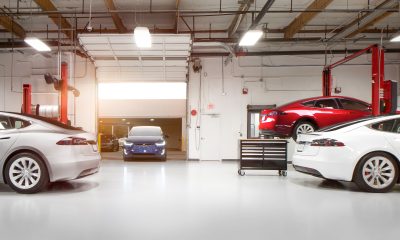
 News2 weeks ago
News2 weeks agoTesla just made Service even easier and more convenient
-
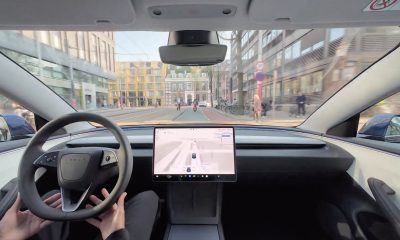
 News2 weeks ago
News2 weeks agoTesla Full Self-Driving’s new version officially gets a wider rollout
-
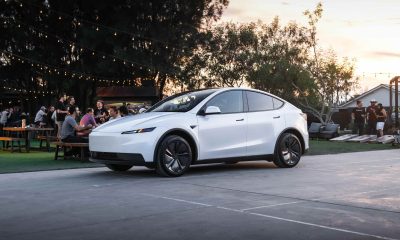
 News2 weeks ago
News2 weeks agoTesla makes crazy move to spur short-term demand in the U.S.
-
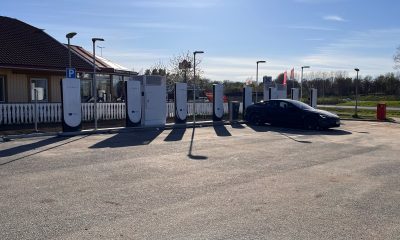
 News2 weeks ago
News2 weeks agoTesla Sweden faced with fresh strike from elevator company
-

 News2 weeks ago
News2 weeks agoKia and Tesla top list in Swedish study of strongest EV batteries
-

 News2 weeks ago
News2 weeks agoTesla is looking to conduct FSD tests in new Swedish city: report
-

 Investor's Corner2 weeks ago
Investor's Corner2 weeks agoTesla analyst says this common earnings narrative is losing importance


